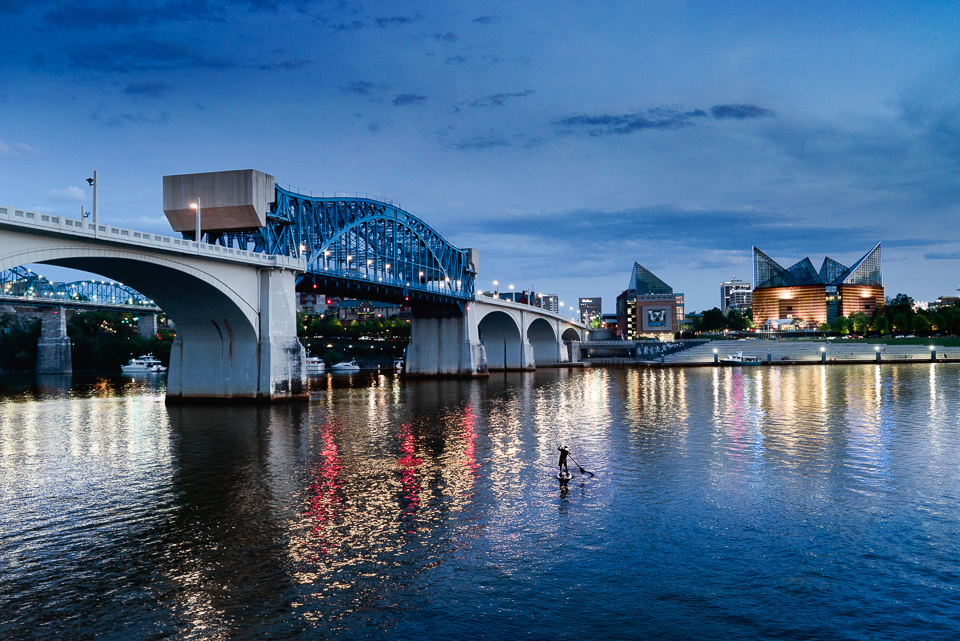
In 1969, TV anchor Walter Cronkite, citing an EPA report, declared that Chattanooga was “the dirtiest city in America.” What a difference half a century makes! Today, Chattanooga (population 176,000) is the poster child for successful urban renewal. As a result of rigorous planning and a highly motivated public-private partnership that started in the ’80s, the city cleaned up the air—and its act.
Chattanooga has long been a playground for outdoor enthusiasts who come here to hike, mountain bike, horseback ride and hang glide—to list just a few activities. The heart and soul of this adventure lover’s paradise is the 26-mile-long Tennessee River Gorge, “Tennessee’s Grand Canyon,” whose creation over 200 million years ago accounts for the region’s dramatic caves, canyons, steep valleys and escarpments.
Downtown, on any warm weekend, paddleboarders glide down the broad, slow-moving Tennessee River, which snakes seductively through the city. On the river’s south shore, hikers jog along the shaded path of the 13-mile-long Tennessee Riverpark, named one of world’s 10 best city running trails by CNN. Meanwhile, across the water in Coolidge Park, families spread blankets on the grass, toss Frisbees or line up for a ride on an antique carousel.
We observed all this—and more—on a recent visit. Here were new and expanded museums, scores of music festivals (from classical to country to blues), a thriving restaurant and bar scene—and luxury hotels.
Don’t miss the following:
The Tennessee Aquarium’s (tnaqua.org) Rated as Chattanooga’s top attraction, the aquarium showcases both fresh and salt water fish, penguins, acrobatic lemurs and much more— great fun for kids and adults alike!
Atop an 80-foot bluff overlooking the Tennessee River, the Hunter Museum of American Art (huntermuseum.org)houses one of the finest collections of American art in the Southeast. The permanent collection includes paintings, works on paper, sculpture, photography, mixed media, video, furniture and contemporary studio glass in a range of styles and periods. Among the artists are Charles Burchfield, Thomas Cole, Winslow Homer, John Marin, Thomas Hart Benton and Mary Cassatt, to name a few, as well as photographers Ansel Adams and Edward Weston.
Chattanooga’s Downtown and Southside neighborhoods are graced with buildings that date to the early 1900s. Reflective of a time when the city was an important hub of industry and transportation, many are embellished with elegant brickwork and decorative cornices. The epicenter of the Southside, which starts south of 12th Street and runs to 20th, is the Terminal Building, a Beaux-Arts-style railroad station built in 1909. Today it’s on the National Register of Historic Places. The building houses the Chattanooga Choo Choo Hotel and an assortment of bars, restaurants, shops and cafés.
Within this complex is the unique Songbirds Museum (songbirdsguitars.com), which opened in 2017. Rotating exhibits include over 300 classic American acoustic and electric guitars made from the 1920s through the 1970s. Some are very rare, valued at six figures or more.
When it comes to dining and drinking on the Southside, choices range from upscale St. John’s Restaurant to the always-buzzing Flying Squirrel, whose ultra-modern design won it a People’s Choice award in a contest sponsored by the Los Angeles chapter of the American Institute of Architects.
For more information: chattanoogafun.com
